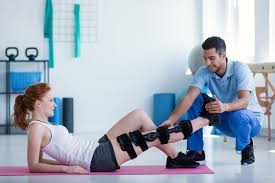Advancements in surgical techniques significantly impact the outcomes of sports injury surgeries in various ways, enhancing both the immediate and long-term recovery of athletes. Here are some key aspects:
1. Minimally Invasive Techniques
- Arthroscopy: This technique allows surgeons to diagnose and treat joint problems using small incisions and a camera. It results in less tissue damage, reduced pain, and faster recovery times compared to open surgery .
- Robotic-Assisted Surgery: Robots assist surgeons in performing precise movements, improving accuracy and reducing the risk of complications. This can be particularly beneficial for complex joint surgeries like those involving the knee or shoulder.
2. Improved Imaging Technologies
- MRI and CT Scans: High-resolution imaging enables better pre-surgical planning by providing detailed views of the injury. This helps in accurately targeting the damaged area and planning the best surgical approach .
- Intraoperative Imaging: Real-time imaging during surgery helps in verifying the correct placement of implants and ensuring the thorough repair of tissues, reducing the likelihood of repeat surgeries.
3. Advanced Materials and Techniques
- Biodegradable Implants: The development of biodegradable screws and plates eliminates the need for a second surgery to remove hardware, enhancing the healing process.
- Tissue Engineering and Regenerative Medicine: Techniques like platelet-rich plasma (PRP) and stem cell therapy promote faster healing of ligaments, tendons, and cartilage. These methods can improve recovery times and outcomes by enhancing the body's natural healing processes .
4. Enhanced Rehabilitation Protocols
- Accelerated Rehabilitation Programs: Advances in surgical techniques often allow for quicker mobilization and the implementation of aggressive rehabilitation protocols, which are essential for athletes aiming to return to their sport as soon as possible .
- Customized Rehab Plans: With better surgical precision, rehab programs can be more personalized, addressing the specific needs and recovery timelines of individual athletes.
5. Better Pain Management
- Improved Anesthesia Techniques: Regional anesthesia and better post-operative pain management protocols reduce pain and discomfort, enabling patients to start rehabilitation exercises sooner and more effectively.
6. Prevention of Complications
- Reduced Infection Rates: Minimally invasive techniques and sterile surgical environments reduce the risk of infections and other complications, ensuring better overall outcomes.
- Enhanced Surgical Precision: Techniques like computer-assisted surgery (CAS) and navigation systems improve the precision of surgical interventions, reducing the risk of errors and improving joint alignment and function.
Case Studies and Outcomes
- ACL Reconstruction: Advances in graft selection, fixation methods, and minimally invasive techniques have significantly improved the outcomes of anterior cruciate ligament (ACL) reconstruction, resulting in higher rates of return to sport and lower rates of re-injury .
- Rotator Cuff Repair: The use of arthroscopy in rotator cuff repairs has led to better shoulder function, reduced post-operative pain, and faster return to athletic activities .
Conclusion
Advancements in surgical techniques have revolutionized sports injury surgeries, leading to better functional outcomes, reduced recovery times, and lower rates of complications. These improvements allow athletes to return to their sports more quickly and with a lower risk of re-injury, ultimately enhancing their overall performance and career longevity.





Comments